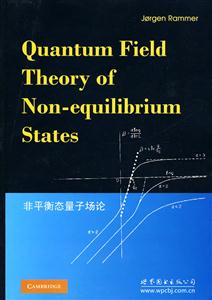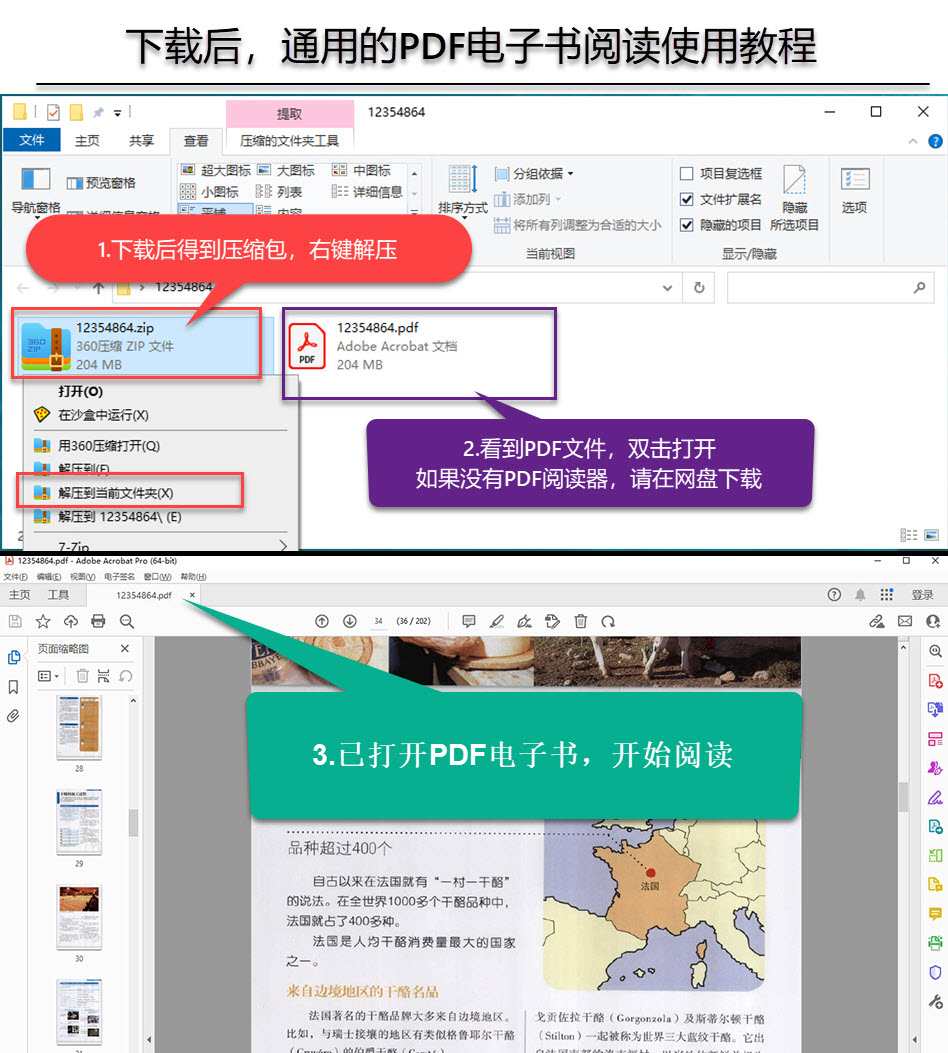非平衡态量子场论
节选
[
《非平衡态量子场论(英文版)》内容简介:The purpose of this book is to provide an introduction to the applications of quantum field theoretic methods to systems out of equilibrium. The reason for adding a book on the subject of quantum field theory is two-fold: the presentation is, to my knowledge, the first to extensively present and apply to non-equilibrium phenomena the real-time approach originally developed by Schwinger, and subsequently applied by Keldysh and others to derive transport equations. Secondly, the aim is to show the universality of the method by applying it to a broad range of phenomena. The book should thus not just be of interest to condensed matter physicists, but to physicists in general as the method is of general interest with applications ranging the whole scale from high-energy to soft condensed matter physics. The universality of the method, as testified by the range of topics covered, reveals that the language of quantum fields is the universal description of fluctuations, be they of quantum nature, thermal or classical stochastic. The book is thus intended as a contribution to unifying the languages used in separate fields of physics, providing a universal tool for describing non-equilibrium states.
]
本书特色
[
《非平衡态量子场论(英文版)》是由世界图书出版公司出版的。
]
内容简介
[
the purpose of this book is to provide an introduction to the applications of quantum field theoretic methods to systems out of equilibrium. the reason for adding a book on the subject of quantum field theory is two-fold: the presentation is, to my knowledge, the first to extensively present and apply to non-equilibrium phenomena the real-time approach originally developed by schwinger, and subsequently applied by keldysh and others to derive transport equations. secondly, the aim is to show the universality of the method by applying it to a broad range of phenomena. the book should thus not just be of interest to condensed matter physicists, but to physicists in general as the method is of general interest with applications ranging the whole scale from high-energy to soft condensed matter physics. the universality of the method, as testified by the range of topics covered, reveals that the language of quantum fields is the universal description of fluctuations, be they of quantum nature, thermal or classical stochastic. the book is thus intended as a contribution to unifying the languages used in separate fields of physics, providing a universal tool for describing non-equilibrium states.
]
目录
preface1 quantum fields 1.1 quantum mechanics 1.2 n-particle system 1.2.1 identical particles 1.2.2 kinematics of fermions 1.2.3 kinematics of bosons 1.2.4 dynamics and probability current and density 1.3 fermi field 1.4 bose field 1.4.1 phonons 1.4.2 quantizing a classical field theory 1.5 occupation number representation 1.6 summary2 operators on the multi-particle state space 2.1 physical observables 2.2 probability density and number operators 2.3 probability current density operator 2.4 interactions 2.4.1 two-particle interaction 2.4.2 fermio boson interaction 2.4.3 electron-phonon interaction 2.5 the statistical operator 2.6 summary3 quantum dynamics and green’s functions 3.1 quantum dynamics 3.1.1 the schrsdinger picture 3.1.2 the heisenberg picture 3.2 second quantization 3.3 green’s functions 3.3.1 physical properties and green’s functions 3.3.2 stable of one-particle green’s functions 3.4 equilibrium green’s functions 3.5 summary4 non-equilibrium theory 4.1 the non-equilibrium problem 4.2 ground state formalism 4.3 closed time path formalism 4.3.1 closed time path green’s function 4.3.2 non-equilibrium perturbation theory 4.3.3 wick’s theorem 4.4 non-equilibrium diagrammatics 4.4.1 particles coupled to a classical field 4.4.2 particles coupled to a stochastic field 4.4.3 interacting fermions and bosons 4.5 the self-energy 4.5.1 non-equilibrium dyson equations 4.5.2 skeleton diagrams 4.6 summary5 real-time formalism 5.1 real-time matrix representation 5.2 real-time diagrammatics 5.2.1 feynman rules for a scalar potential 5.2.2 feynman rules for interacting bosons and fermions 5.3 triagonal and symmetric representations 5.3.1 fermion-boson coupling 5.3.2 two-particle interaction 5.4 the real rules: the rak-rules 5.5 non-equilibrium dyscn equations 5.6 equilibrium dyscn equation 5.7 real-time versus imaginary-time formalism 5.7.1 imaginary-time formalism 5.7.2 imaginary-time green’s functions 5.7.3 analytical continuation procedure 5.7.4 kadanoff-baym equations 5.8 summary6 linear response theory 6.1 linear response 6.1.1 density re~,ponse 6.1.2 current response 6.1.3 ccnductivity tensor 6.1.4 ccnductance 6.2 linear response cf green’s functions 6.3 properties cf respone hmctions 6.4 stability cf the thermal equilibrium ,tate 6.5 fluctuation-dissipation theorem 6.6 time-reversal symmetry 6.7 scattering and correlation functions 6.8 summary7 quantum kinetic equations 7.1 left-right subtracted dyson equation 7.2 wigner or mixed coordinates 7.3 gradient approximation 7.3.1 spectral weight function 7.3.2 quasi-particle approximation 7.4 impurity scattering 7.4.1 boltzmannian motion in a random potential 7.4.2 brownian motion 7.5 quasi-classical green’s function technique 7.5.1 electron-phonon interaction 7.5.2 renormalization of the a.c. conductivity 7.5.3 excitation representation 7.5.4 particle conservation 7.5.5 impurity scattering 7.6 beyond the quasi-classical approximation 7.6.1 thermo-electrics and magneto-transport 7.7 summary8 non-equilibrium superconductivity 8.1 bcs-theory 8.1.1 nambu or particle-hole space 8.1.2 equations of motion in nambu keldysh space 8.1.3 green’s functions and gauge transformations 8.2 quasi-classical green’s function theory 8.2.1 normalization condition 8.2.2 kinetic equation 8.2.3 spectral densities 8.3 trajectory green’s functions 8.4 kinetics in a dirty superconductor 8.4.1 kinetic equation 8.4.2 ginzburg-landau regime 8.5 charge imbalance 8.6 summary9 diagrammatics and generating functionals 9.1 diagrammatics 9.1.1 propagators and vertices 9.1.2 amplitudes and superposition 9.1.3 fundamental dynamic relation 9.1.4 low order diagrams 9.2 generating functional 9.2.1 fhnctional differentiation 9.2.2 from diagrammatics to differential equations 9.3 connection to operator formalism 9.4 fermions and grassmann variables 9.5 generator of connected amplitudes 9.5.1 source derivative proof 9.5.2 combinatorial proof 9.5.3 functional equation for the generator 9.6 one-particle irreducible vertices 9.6.1 symmetry broken states 9.6.2 green’s functions and one-particle irreducible vertices 9.7 diagrammatics and action 9.8 effective action and skeleton diagrams 9.9 summary10 effective action 10.1 functional integration 10.1.1 functional fourier transformation 10.1.2 gaussian integrals 10.1.3 fermionic path integrals 10.2 generators as functional integrals 10.2.1 euclid versus minkowski 10.2.2 wick’s theorem and functionals 10.3 generators and 1pi vacuum diagrams 10.4 1pi loop expansion of the effective action 10.5 two-particle irreducible effective action 10.5.1 the 2pi loop expansion of the effective action 10.6 effective action approach to bose gases 10.6.1 dilute bose gases 10.6.2 effective action formalism for bosons 10.6.3 homogeneous bose gas 10.6.4 renormalization of the interaction 10.6.5 inhomogeneous bose gas 10.6.6 loop expansion for a trapped bose gas 10.7 summary11 disordered conductors 11.1 localization 11.1.1 scaling theory of localization 11.1.2 coherent backscattering 11.2 weak localization 11.2.1 quantum correction to conductivity 11.2.2 cooperon equation 11.2.3 quantum interference and the cooperon 11.2.4 quantum interference in a magnetic field……12 classical statistical dynamicsappendices
封面

书名:非平衡态量子场论
作者:拉梅(Jrgen Rammer)
页数:536
定价:¥85.0
出版社:世界图书出版公司
出版日期:2010-04-01
ISBN:9787510005633
PDF电子书大小:51MB 高清扫描完整版
本文标题:《非平衡态量子场论》PDF下载
资源仅供学习参考,禁止用于商业用途,请在下载后24小时内删除!

